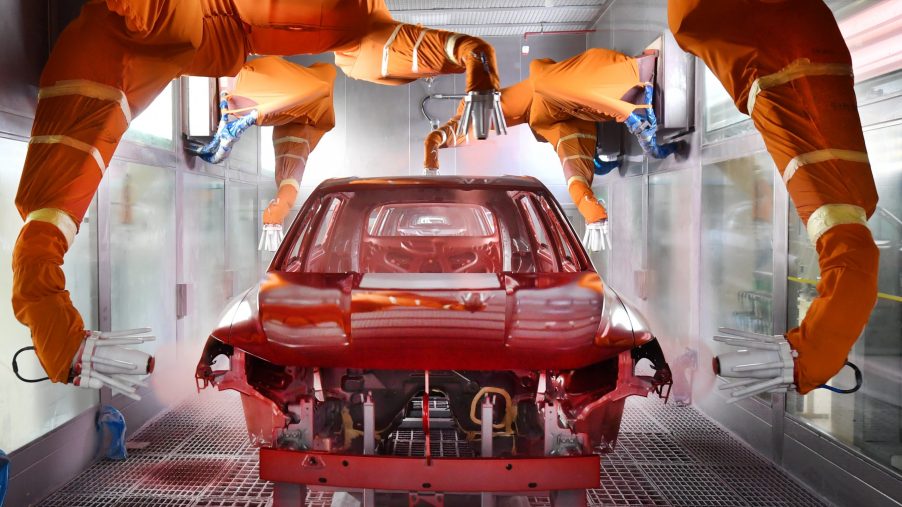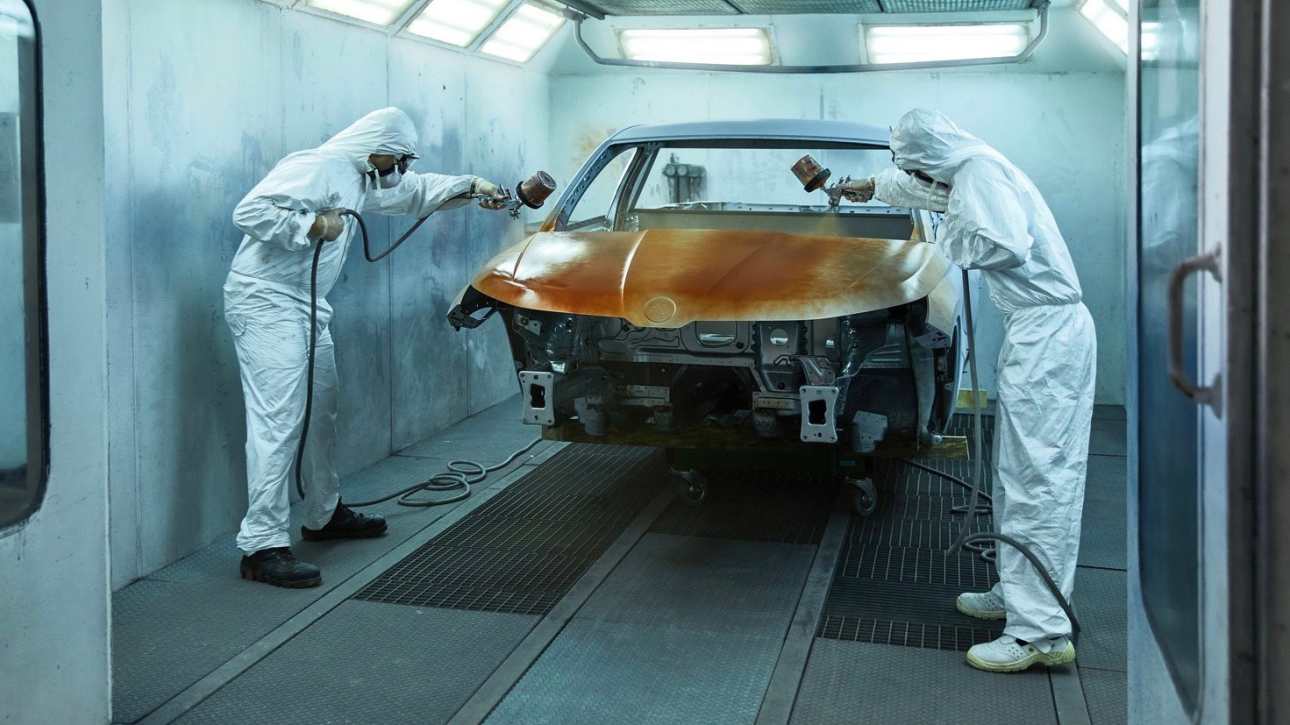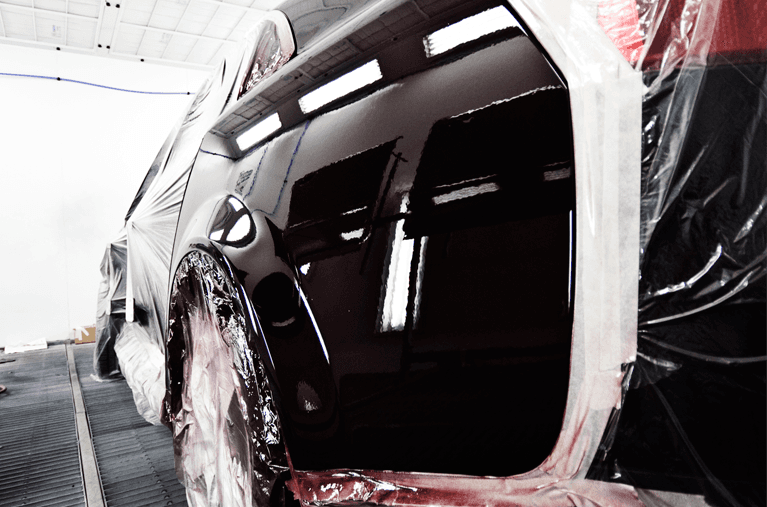In the modern automotive industry, ensuring a perfect paint finish is crucial. Save Time and Money with Automated Car Paint Inspection is a burgeoning technology that professionals in the industry should not overlook. This article aims to delve into the various benefits and mechanisms of this revolutionary technology, and how it can be a game-changer for maintaining high-quality standards while being cost-effective.
Imagine a world where you no longer need to spend hours on manual inspections and can rely on precise, automated systems to ensure the paint quality of every vehicle. That future is here, and it is transforming the car manufacturing process for the better. By leveraging the power of AI and machine learning, companies can achieve unprecedented accuracy and efficiency. This technology is a tremendous addition to any manufacturing setup and has been approved by industry experts as a viable solution to traditional painting challenges.

Introduction to Automated Car Paint Inspection
What is Automated Car Paint Inspection?
Automated Car Paint Inspection is a process that utilizes advanced technologies such as artificial intelligence, machine learning, and robotics to inspect the paint quality of vehicles. This system can identify defects, inconsistencies, and other issues with much greater accuracy than manual inspection methods.
Why is it Important?
Ensuring a high-quality paint finish is vital for customer satisfaction and brand reputation. Any imperfections in the paint job can lead to customer dissatisfaction, returns, and additional costs. Automated inspection systems help eliminate these risks by providing consistent and reliable quality checks.
The Benefits of Automated Car Paint Inspection
Saving Time
Automated systems significantly reduce the time needed for inspections. Manual inspections can be labor-intensive and time-consuming, whereas automated systems can perform the same tasks much quicker and with greater efficiency.
Cost Savings
Reducing the need for manual labor and increasing the accuracy of inspections can lead to substantial cost savings. Automated systems minimize the risk of defects going unnoticed, reducing the need for costly rework and returns.
Increased Accuracy
Automated systems use advanced algorithms and imaging technology to detect even the smallest imperfections. This level of precision is difficult to achieve with manual inspections, making automated systems far more reliable.
Consistency and Reliability
Human inspectors can vary in their assessments, leading to inconsistencies in quality. Automated systems provide consistent results, ensuring that every vehicle meets the same high standards.
The Technology Behind Automated Car Paint Inspection
Artificial Intelligence and Machine Learning
AI and machine learning algorithms are at the core of automated inspection systems. These technologies enable the system to learn from previous inspections and continuously improve its accuracy and efficiency.
Robotics
Robotic arms equipped with advanced sensors and cameras can perform inspections with incredible precision. These robots can reach areas that are difficult for human inspectors to access, ensuring a thorough inspection of the entire vehicle.
Imaging Technology
High-resolution cameras and imaging systems capture detailed images of the vehicle’s paint surface. These images are then analyzed by the AI algorithms to identify any defects or inconsistencies.
Implementing Automated Car Paint Inspection in Manufacturing
Steps to Integration
Integrating automated inspection systems into the manufacturing process involves several steps:
- Assessing the current inspection process and identifying areas for improvement.
- Selecting the right technology and equipment for your specific needs.
- Implementing the system and training staff to use it effectively.
- Continuously monitoring and optimizing the system to ensure it operates at peak efficiency.
Challenges and Solutions
Implementing new technology can come with challenges, such as:
- Resistance to change from staff.
- Initial setup costs.
- Technical difficulties during the integration process.
However, these challenges can be overcome with proper planning, training, and support from technology providers.
Case Studies and Success Stories
Leading Automotive Manufacturers
Many leading automotive manufacturers have successfully implemented automated car paint inspection systems and have reported significant improvements in quality and efficiency. These success stories highlight the value and potential of this technology.
Small to Medium Enterprises
Even smaller manufacturers can benefit from automated inspection systems. By investing in this technology, they can compete with larger companies and offer high-quality products to their customers.
Future Trends in Automated Car Paint Inspection
Advancements in AI and Machine Learning
As AI and machine learning technologies continue to advance, we can expect even greater accuracy and efficiency in automated inspection systems. These advancements will further enhance the quality of car paint inspections.
Integration with Other Automotive Technologies
Automated car paint inspection systems can be integrated with other automotive technologies, such as autonomous vehicles and smart manufacturing systems. This integration will create a more seamless and efficient manufacturing process.
Conclusion: Embracing the Future of Car Paint Inspection
In conclusion, Save Time and Money with Automated Car Paint Inspection is not just a futuristic concept – it is a reality that is already transforming the automotive industry. By embracing this tremendous technology, manufacturers can ensure high-quality paint finishes, reduce costs, and improve efficiency. The future of car paint inspection is here, and it is an opportunity that industry professionals cannot afford to miss.

FAQ
What are the main benefits of automated car paint inspection?
Automated car paint inspection offers several benefits, including time savings, cost reductions, increased accuracy, and consistent quality. By leveraging advanced technologies like AI and robotics, manufacturers can ensure that every vehicle meets high-quality standards.
How does automated inspection compare to manual inspection?
Automated inspection systems are far more accurate and efficient than manual inspections. They can detect even the smallest imperfections that human inspectors might miss. Additionally, automated systems provide consistent results, eliminating the variability associated with human assessments.
Is it expensive to implement automated car paint inspection systems?
While there may be initial setup costs, the long-term benefits of automated car paint inspection systems often outweigh the expenses. Reduced labor costs, fewer defects, and improved efficiency can lead to substantial cost savings over time.
